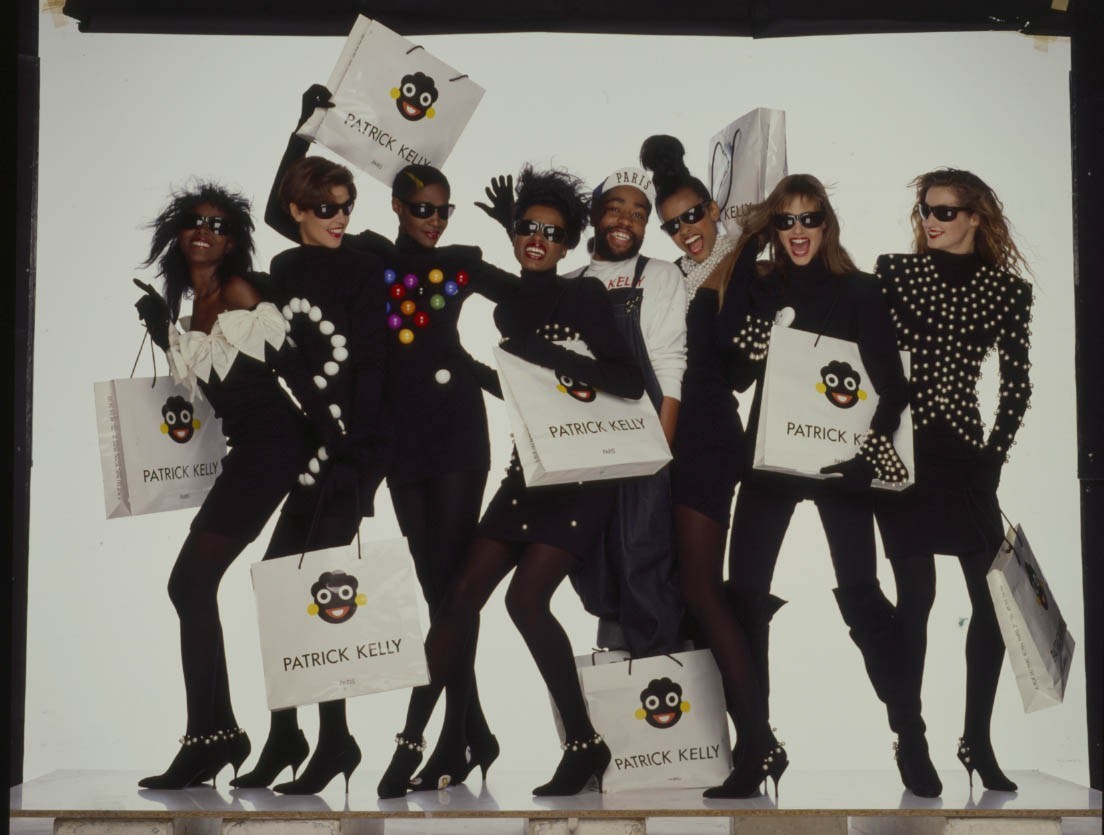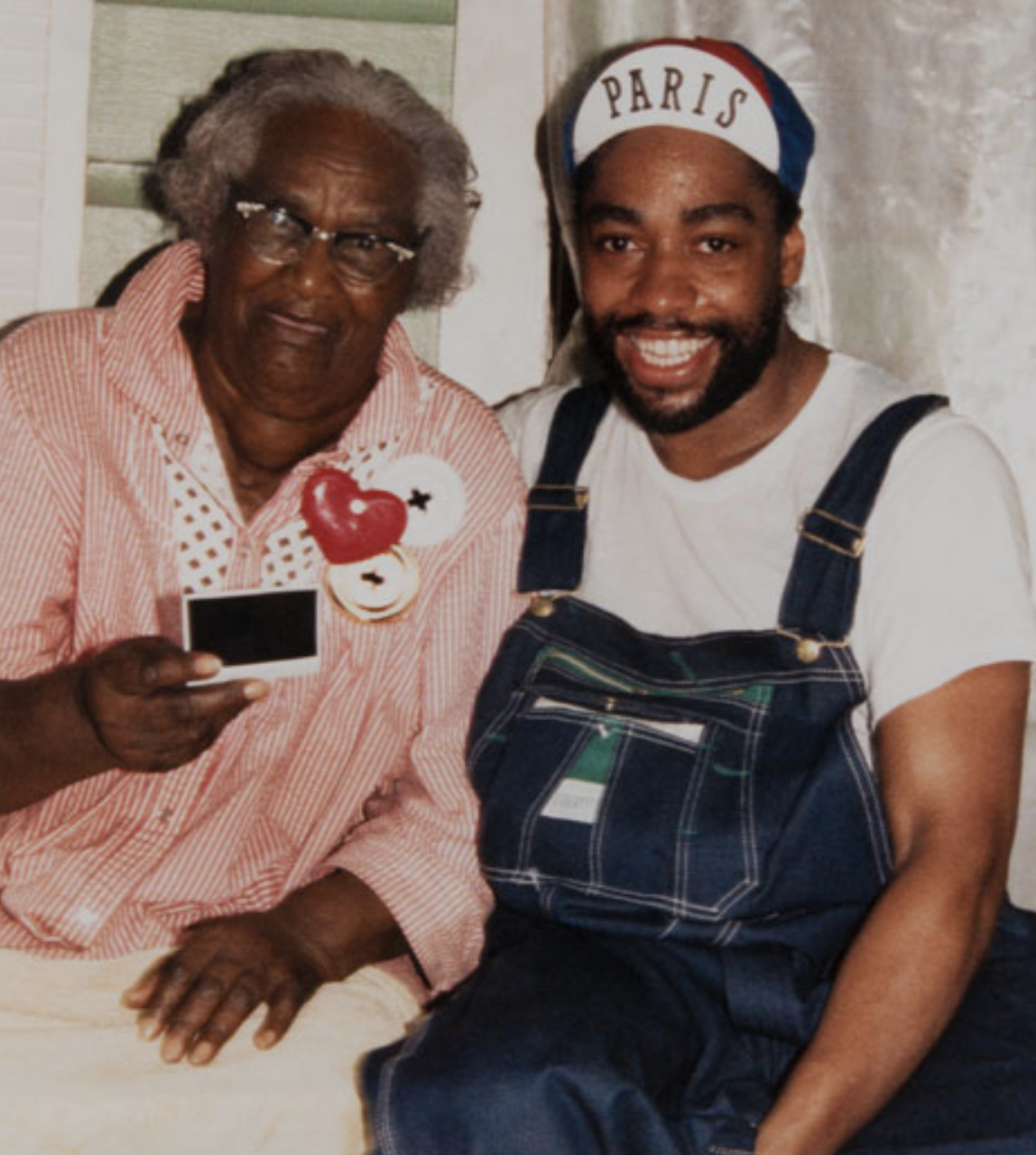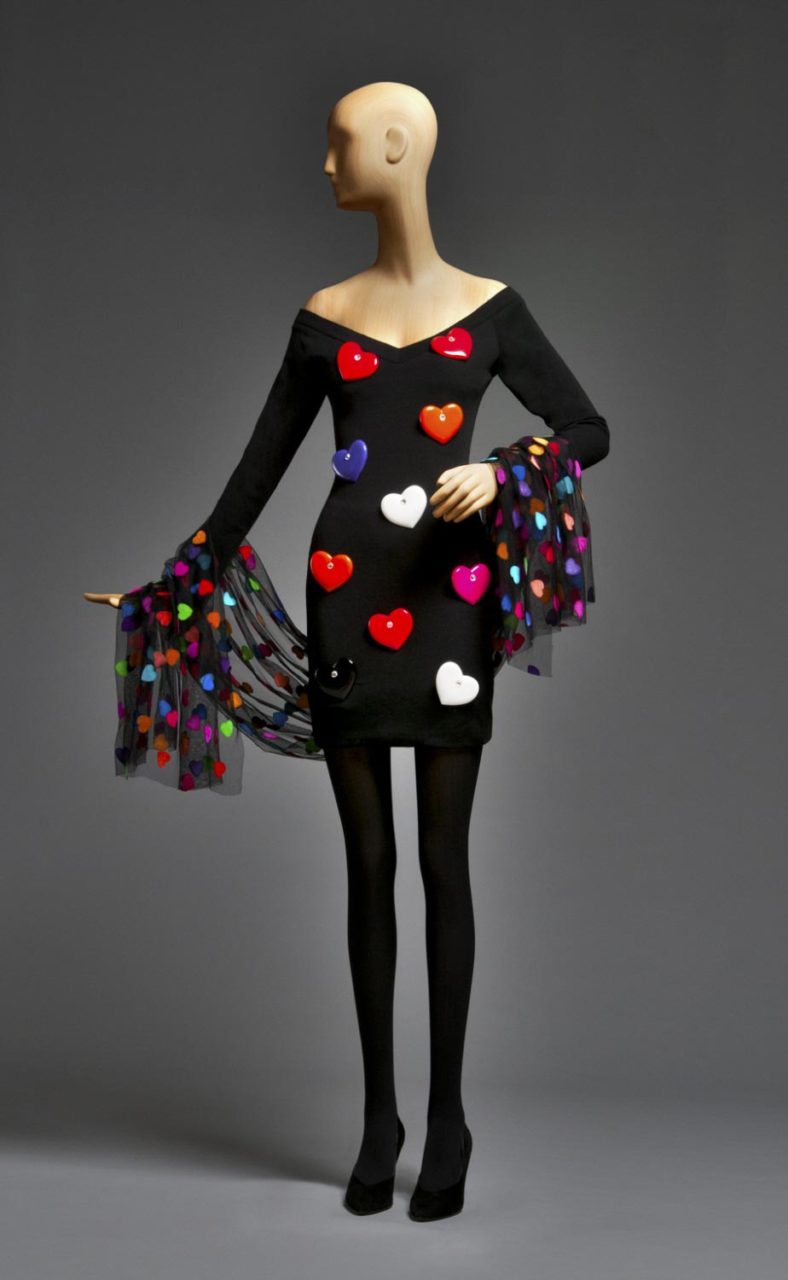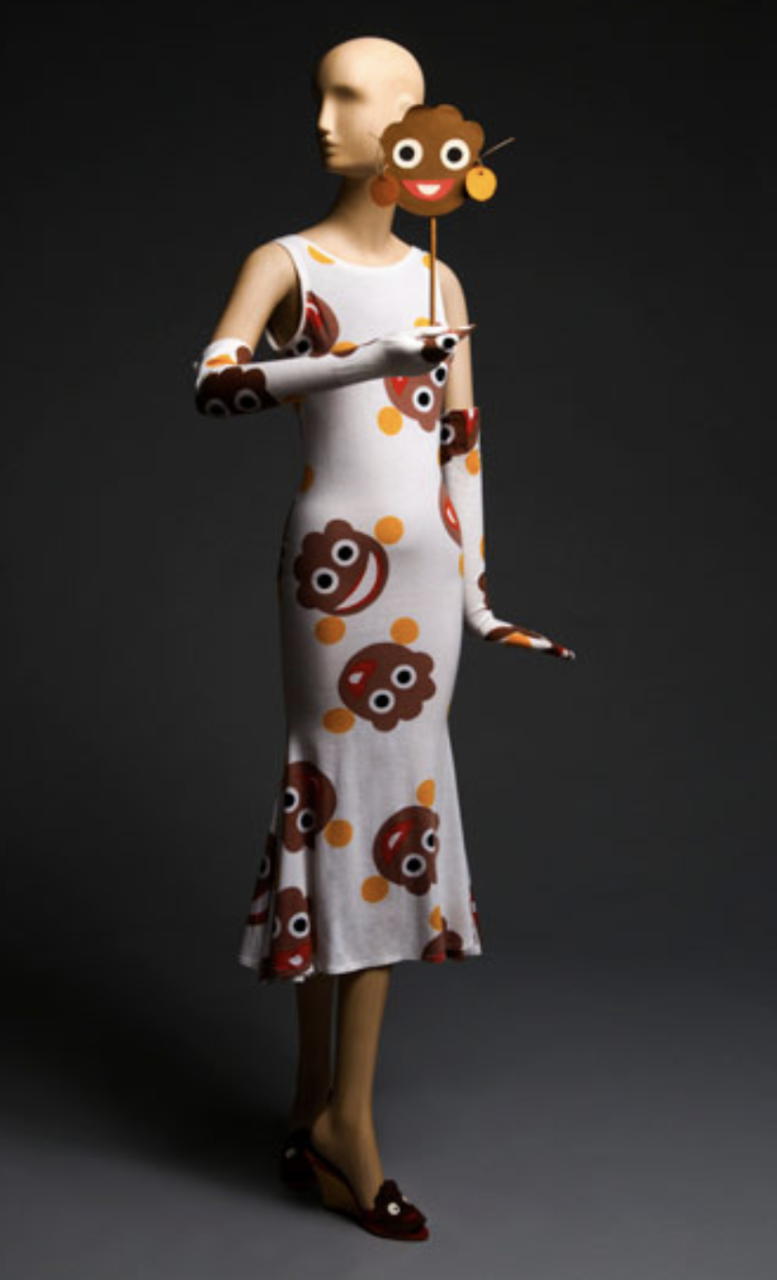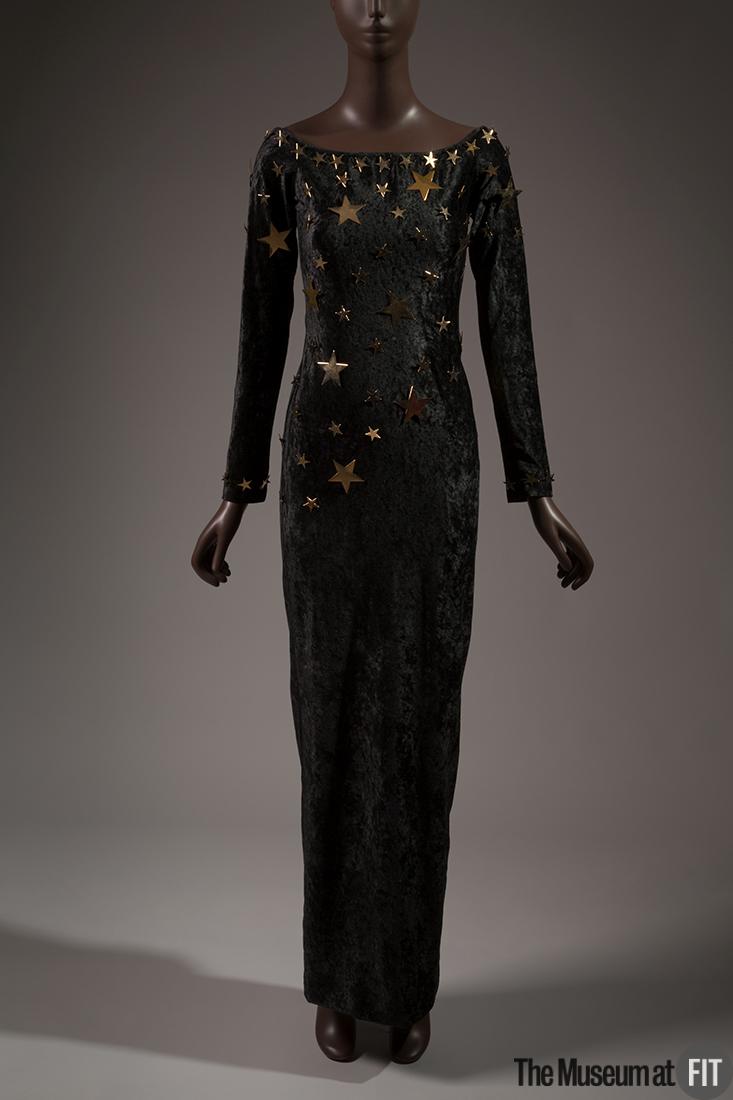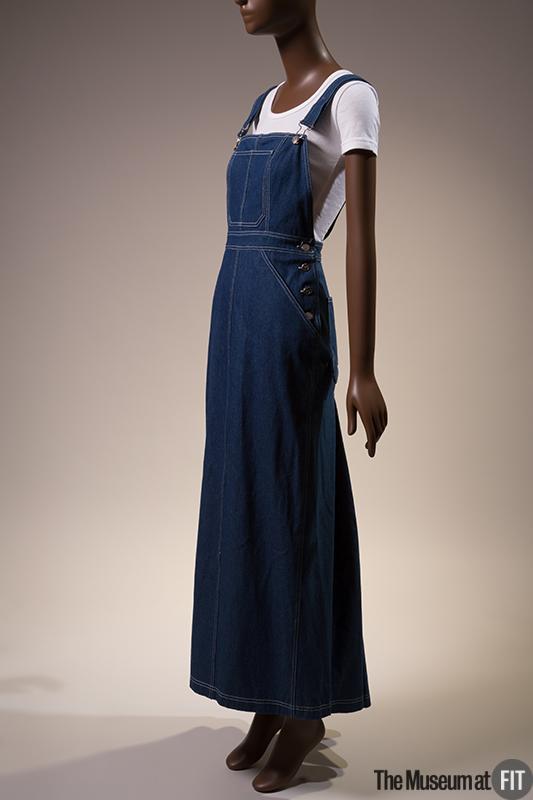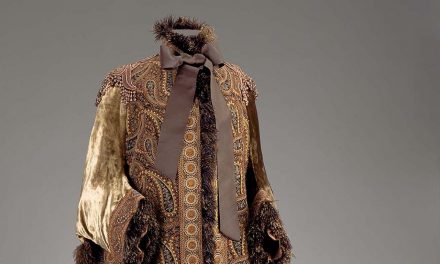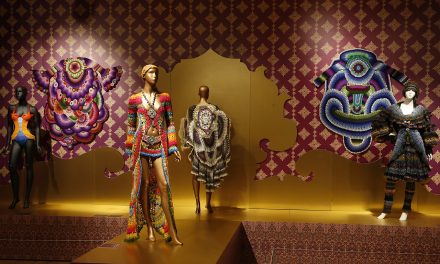About the Designer
Patrick Kelly was the first American designer ever to be admitted to the Chambre Syndicale du Prêt-à-Porter, which governs the French ready-to-wear industry. He unapologetically incorporated his Southern Roots, racial imagery, and expressions of Black joy into his designs; stating “I want my clothes to make you smile.”
Born in Vicksburg, Mississippi, he was raised by his mother and his grandmother, Ethel Rainey, who became his greatest muse. Kelly’s signature use of playful buttons referenced the mismatched buttons his grandmother used to mend his family’s clothing.
After studying Art and African American History at Jackson State University for two years, Kelly moved to Atlanta in 1974. While there, he volunteered to design window displays for a Yves Saint Laurent Rive Gauche boutique and set up his own vintage store. In 1979, he moved to New York to enroll in Parsons School of Design, but became frustrated by the lack of support from the industry and moved to Paris later that year. In 1985, the first “Patrick Kelly Paris” commercial collection was featured in a six-page spread in French Elle magazine. This high profile exposure led to the fashion conglomerate Warnaco investing in his business in 1987.
Oliveiro Toscani (Italian, 1942–present). Patrick Kelly Fall 1988 Collection. Source: Dazed
Photographer unknown. Patrick Kelly with his grandmother Ethel Rainey. Source: PMA
Kelly’s interest in confronting racist iconography, specifically of the American South, was prevalent throughout his lifetime. Kelly knowingly incorporated images of the golliwog – a fictional Black character that emerged in children’s literature near the turn of the century and remained a part of popular culture until the 1970s – into his collections. Professor and author Dr. Monica L. Miller claims that one of the ways Kelly attempted to destigmatize racist memorabilia was by reusing, repurposing, and reappropriating it. Kelly’s runway shows began with a prayer backstage, continued with spray-painting a heart onto the stage in homage to urban street art, and ended in joyous celebration. Pat Cleveland famously modeled a Josephine Baker-inspired ensemble in the finale of his 1986 fall collection. Kelly was also a visible part of his print ads and campaigns.
After producing ten collections, including a collaboration with Benetton, Kelly passed away in 1990 at the age of thirty-five due to complications from AIDS. He is buried in the Père Lachaise Cemetery in Paris, where his epitaph states “Nothing Is Impossible.” Kelly built a strong legacy. He paved the way for other Black designers, including Kerby Jean-Raymond of Pyer Moss and Telfar Clemens, to engage directly with racial themes.
Timeline Essays (Click the images to read more):
Patrick Kelly (American, 1954-1990). Dress, Fall 1986. Black wool and multicolored plastic buttons. New York: The Museum at FIT, 2016.48.1. Museum Purchase, 2016. Source: Fashion History Timeline
GALLERY
Patrick Kelly (American, 1954-1990). Woman's Ensemble: dress, Pins, and Scarf, Fall/Winter 1988. Dress and pins: black wool knit, multicolored plastic, rhinestones scarf: black synthetic net, multicolored synthetic flocking. Philadelphia: Philadelphia Museum of Art, 2014-207-16a--l. Source: PMA
Patrick Kelly (American, 1954-1990). Woman’s Ensemble, Spring/Summer 1986. Cotton and nylon. Pennsylvania, 2016.48.1. Promised gift of Bjorn Guil Amelan and Bill T. Jones to the Philadelphia Museum of Art. Source: PMA
Paul Van Ravenstein (American, 1950–present). Pat Cleveland on Patrick Kelly’s runway, 1985. Source: PMA
Patrick Kelly (American, 1954-1990). Evening dress, 1987-1988. Silk panne velvet, synthetic stretch, and metal. New York: The Museum at FIT, 2010.30.1. Gift of Gloria Steinem. Source: Museum at FIT
Patrick Kelly (American, 1954-1990). Pin, 1987-1990. Plastic. New York: The Museum at FIT, 2010.30.4. Gift of Gloria Steinem, 2010. Source: Museum at FIT
Patrick Kelly (American, 1954-1990). Dress, Fall 1987. Cotton denim and metal. New York: The Museum at FIT, 2016.82.9. Gift of Bjorn G. Amelan and Bill T. Jones, 2016. Source: Museum at FIT
To Learn more:
- Miller, Monica. “Dr. Monica Miller and Eric Darnell Pritchard in conversation about Patrick Kelly.” Filmed February 6, 2017 at The Museum at FIT Black Fashion Designers Symposium, New York, NY. Video, 44:42. https://www.youtube.com/watch?v=ve8dpb73hCc
- Philadelphia Museum of Art. “Patrick Kelly: Runway of Love.” Accessed June 19, 2020. https://www.philamuseum.org/exhibitions/799.html?page=2
- POBA. “Patrick Kelly | Art Lives.” Accessed August 4, 2020. https://poba.org/poba_artists/patrick-kelly/.
- Singh, Rajat. “Fashion Flashback: Patrick Kelly.” CFDA. Accessed June 19, 2020. https://cfda.com/news/fashion-flashback-patrick-kelly


